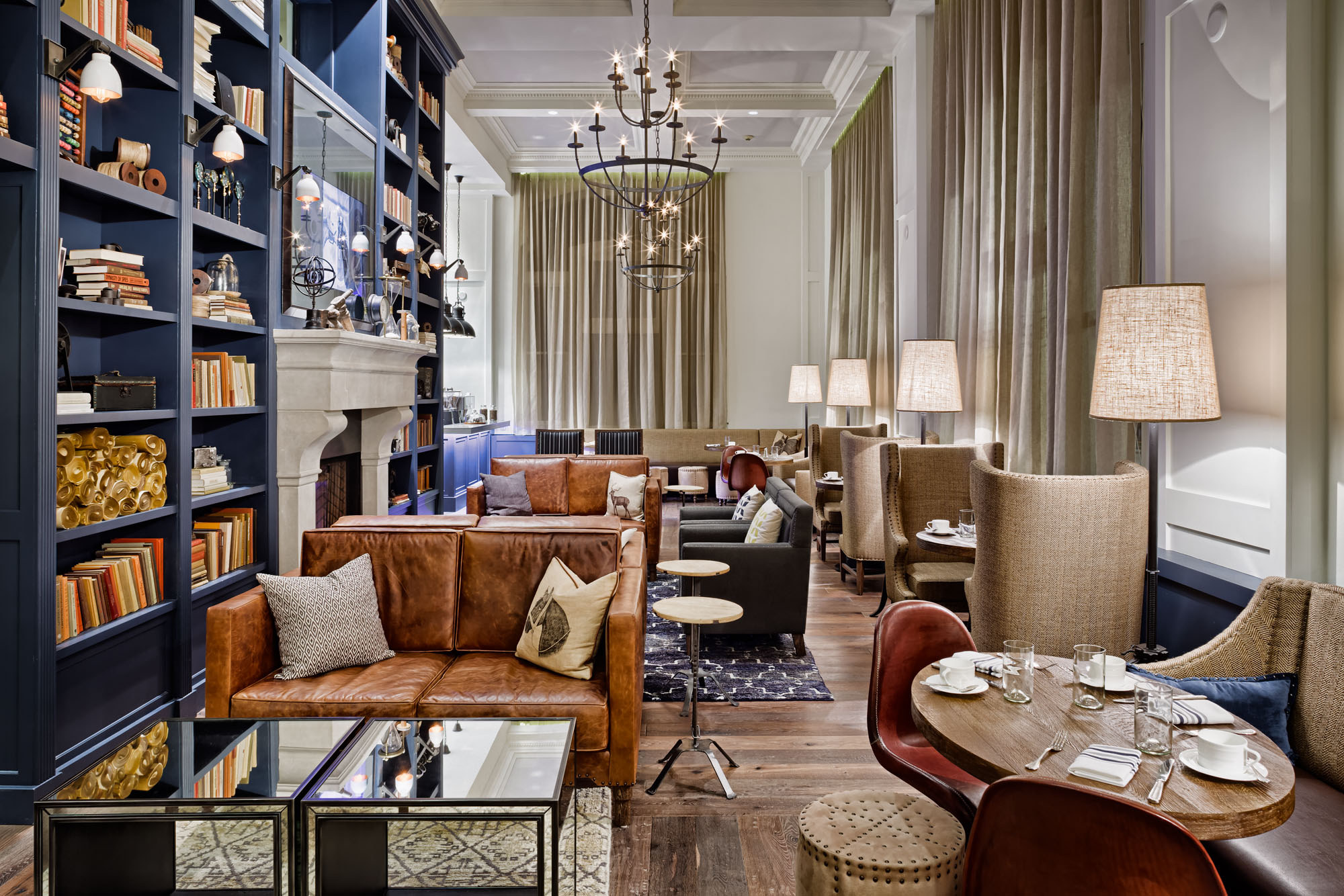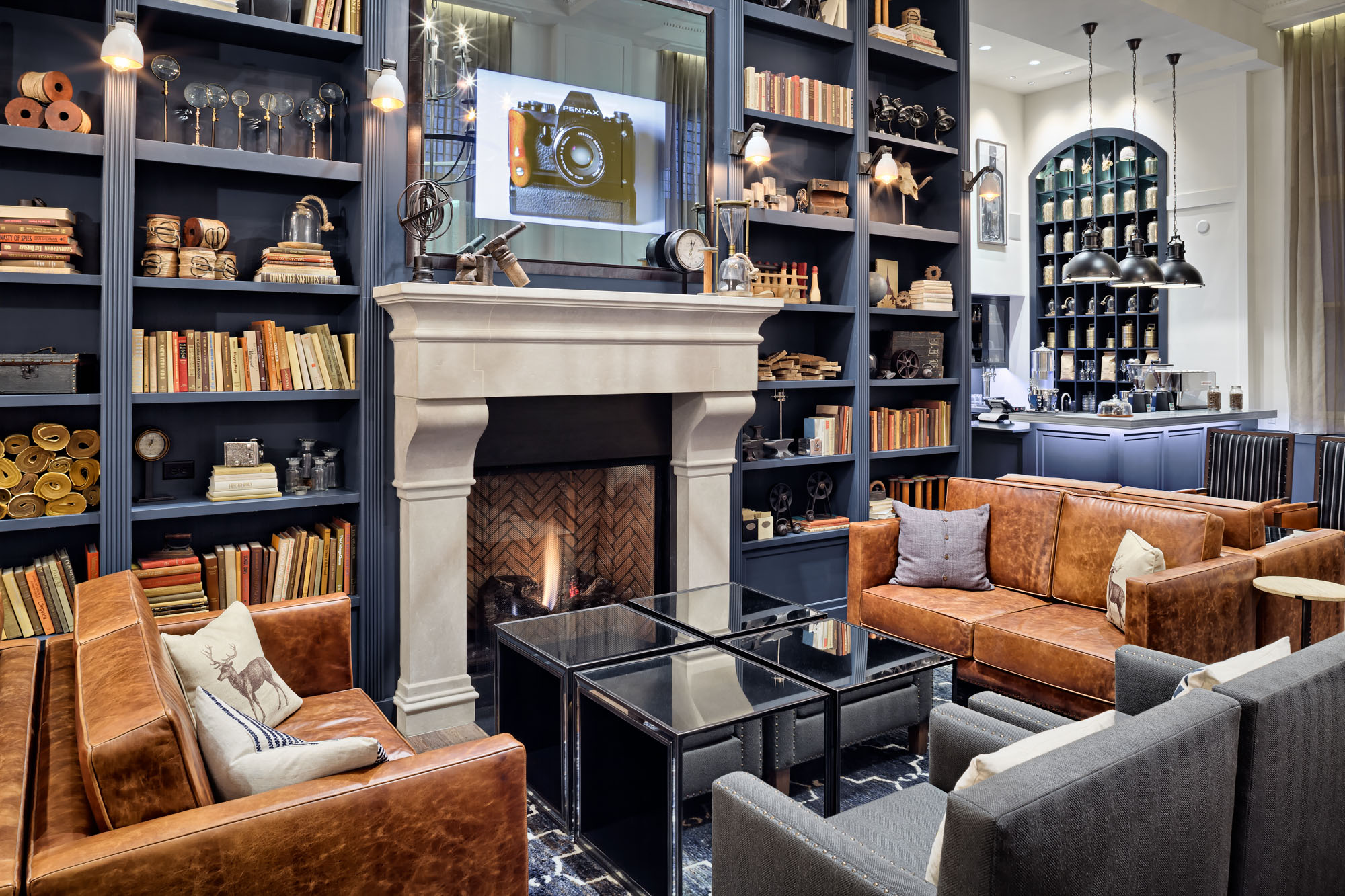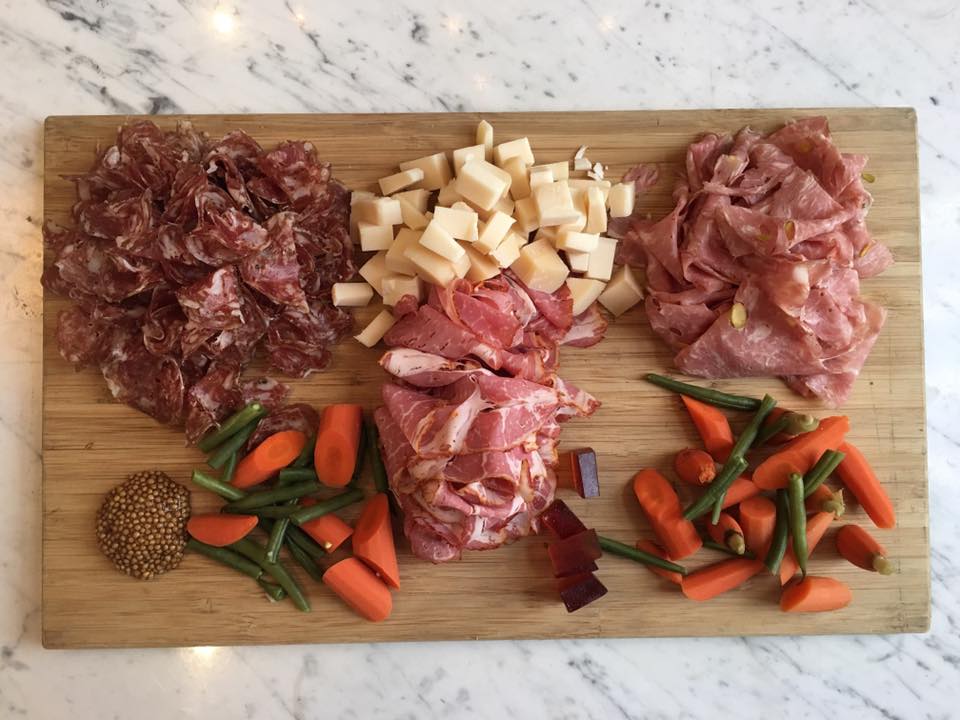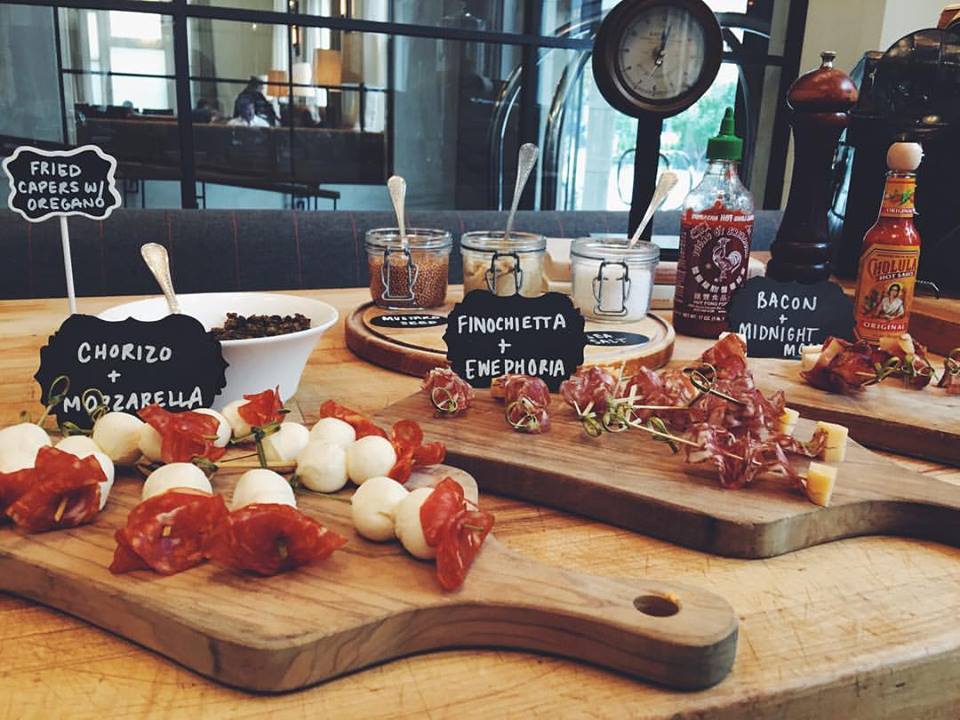Meat and cheese are having a moment. Countless restaurants in Denver boast robust charcuterie programs, and it’s hard to attend a house party without a trace of a meat and cheese board. With this appetizer growing in popularity, The Nickel decided to host a “Taste & Style Charcuterie Boards” masterclass with Executive Sous Chef Russell Stippich so guest can bring restaurant-quality hors d’oeuvres home.
For $10 per person, we gathered in Hotel Teatro’s Study to learn the basics of building a perfectly balanced charcuterie board. The Study is a lounge-meets-bar inside the hotel with a fireplace, library books and cozy corners to settle in with one of The Nickel’s delicious cocktails. We loved the unique flavors in the “Pearfection” with Leopold’s Small Batch Gin, elderflower liqueur, Pear William liqueur, lemon juice and Prosecco.

For the Nickel, charcuterie is more than just a passing fad—it’s one of the main focuses of the restaurant. Stippich explains that all chefs are highly trained in charcuterie, and they make many items in-house. And, for two hours last week, he gave away all of his tips for us to share.
1. Head to Truffle Cheese Shop or King Soopers
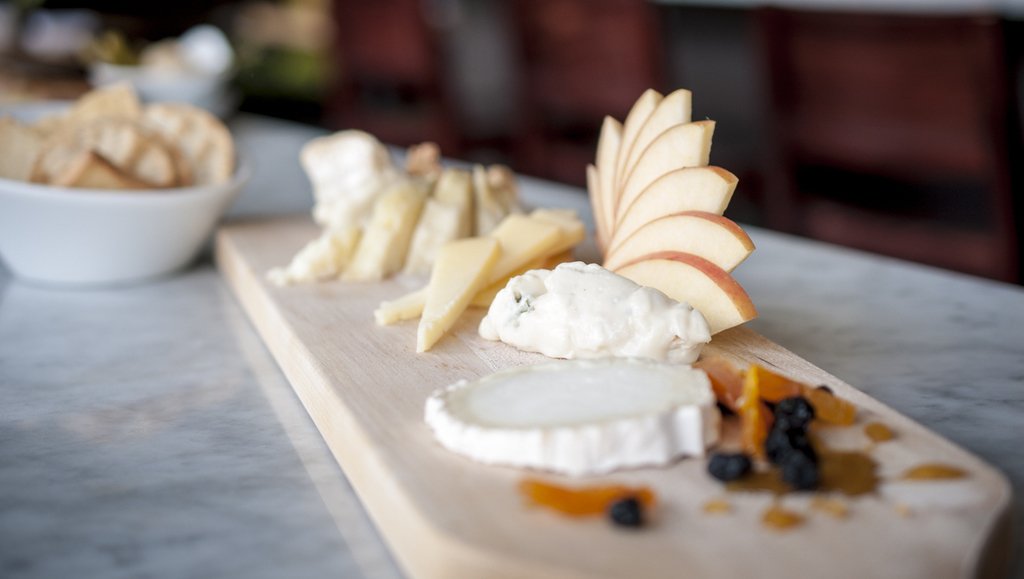
“Right now, other than The Truffle Cheese Shop, King Soopers has the best selection of cheese in the city,” Stippich explained. “Their partnership with Murray’s Cheese has brought a lot of great product to the grocery store.”
How do you make sure you aren’t picking a second-rate product once you’re there, though? Stippich said it’s as simple as looking at the bar code— it includes the batch number, which contains the date the cheese production started and when it was packaged. Look for hard cheeses with salt crystals that were aged between 10 and 14 months and soft cheeses that aged between 4 and 6 months.
2. For Cheese, Hit Big Regions and Textures
When it comes to building a better board, Stippich said it’s best to hit the four major regions— Spain, Italy, France and, more recently, the US.
“The Nickel offers anywhere from 8-10 cheeses at a time, but for home, usually 3-4 is right if you hit different regions and textures,” he said. “The biggest mistake I see people make is not being adventurous enough. Don’t be afraid of the stinky cheese!”
His last piece of cheese advice was a controversial one— step away from the brie. “Don’t hate me, but I think it’s boring. Push yourself to try something funkier,” he added.
3. For Meat, Mix Muscles
Like mixing textures and regions for cheese, it’s important to gather a selection of meats too. Stippich explained that the best way to achieve this is to look for whole muscle and mixed muscle meats. For mixed muscle meats, producers cure leftover meat and fat, like salami. Whole muscle meats are the whole cuts that you see hanging in butcher shops for months, like mortadella, prosciutto and speck.
4. Don’t Forget The Accoutrements
What you serve with the meat and cheese is just as important as the charcuterie. Stippich said to focus on what you like most, be it bread or crackers, and don’t forget something pickled. You can make a quick pickle of anything (carrots, okra, green beans and more) by boiling 1 liter of vinegar with 10 grams of salt and 5 grams of sugar. Bring to a boil, pour over your vegetable of choice and cool in the refrigerator overnight.
This event was part of Hotel Teatro’s Creative Workshop Series. Once a month, they will host a masterclass featuring various makers around the city in The Study. For information on their remaining classes click here.
Unless noted, all photography courtesy of Hotel Teatro and The Nickel.






